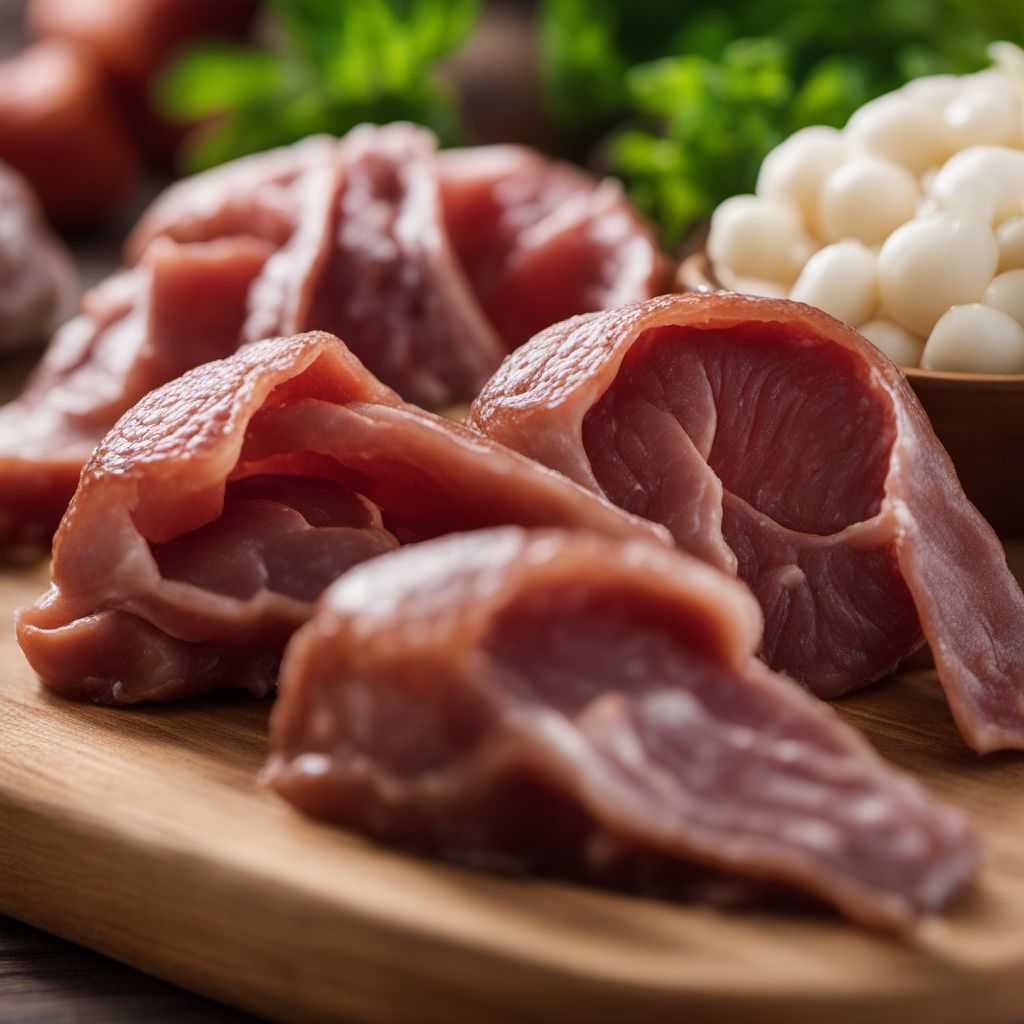
Ingredient
Equine edible offal, non-muscle, other than liver and kidney
Exploring the Hidden Gems of Equine Edible Offal
Equine edible offal, non-muscle, other than liver and kidney, encompasses a range of organ meats such as heart, lungs, spleen, and tripe. These offal cuts have a robust flavor and tender texture, making them ideal for slow cooking or braising. The heart is lean and muscular, with a slightly gamey taste, while the lungs have a delicate, airy texture. Spleen offers a rich, earthy flavor, and tripe provides a chewy and gelatinous mouthfeel. The appearance of these offal cuts varies, with heart resembling a small steak, lungs being spongy and light, spleen appearing dark and marbled, and tripe having a honeycomb-like texture.
Origins and history
The consumption of equine offal has a long history, dating back to ancient civilizations. In many cultures, these organ meats were highly valued for their nutritional benefits and were considered a delicacy. Equine offal has been a staple in traditional dishes from various regions, including Europe, Asia, and South America.
Nutritional information
Equine edible offal, non-muscle, other than liver and kidney, is a nutrient-dense ingredient, rich in protein, vitamins, and minerals. It provides essential nutrients such as iron, zinc, vitamin B12, and vitamin A, contributing to overall health and well-being.
Allergens
Equine edible offal, non-muscle, other than liver and kidney, may pose allergenic risks to individuals with specific meat allergies or sensitivities. It is important to exercise caution and consult with a healthcare professional if you have any concerns.
How to select
When selecting equine edible offal, non-muscle, other than liver and kidney, look for cuts that are fresh, firm, and free from any unpleasant odors. The color should be vibrant, and there should be no signs of discoloration or excessive blemishes. If purchasing from a butcher or specialty store, ensure that the offal is sourced from reputable suppliers.
Storage recommendations
To maintain the freshness and quality of equine edible offal, non-muscle, other than liver and kidney, it is best to store it in the refrigerator at a temperature below 40°F (4°C). Wrap the offal tightly in plastic wrap or place it in an airtight container to prevent any cross-contamination or odor transfer. Use within a few days of purchase for optimal flavor and texture.
How to produce
Producing equine edible offal, non-muscle, other than liver and kidney, requires specialized knowledge and facilities. It is recommended to leave the production to professional suppliers who adhere to strict quality and safety standards.
Preparation tips
Equine edible offal, non-muscle, other than liver and kidney, can be prepared in various ways depending on the specific cut. Heart can be marinated and grilled for a flavorful steak-like experience, while lungs are often used in soups or stews. Spleen can be braised or sautéed to bring out its rich flavor, and tripe is commonly used in dishes like menudo or as a filling for dumplings. It is important to thoroughly clean and trim the offal before cooking to remove any excess fat or membranes.
Culinary uses
Equine edible offal, non-muscle, other than liver and kidney, is commonly used in traditional dishes around the world. Heart can be sliced and used in stir-fries or served as a main course, while lungs are often incorporated into hearty soups or pâtés. Spleen can be added to stews or used as a filling for sausages, and tripe is a popular ingredient in dishes like tripe soup or tripe tacos.
Availability
Equine edible offal, non-muscle, other than liver and kidney, is commonly available in regions where horse meat is consumed, such as certain parts of Europe, Asia, and South America.
